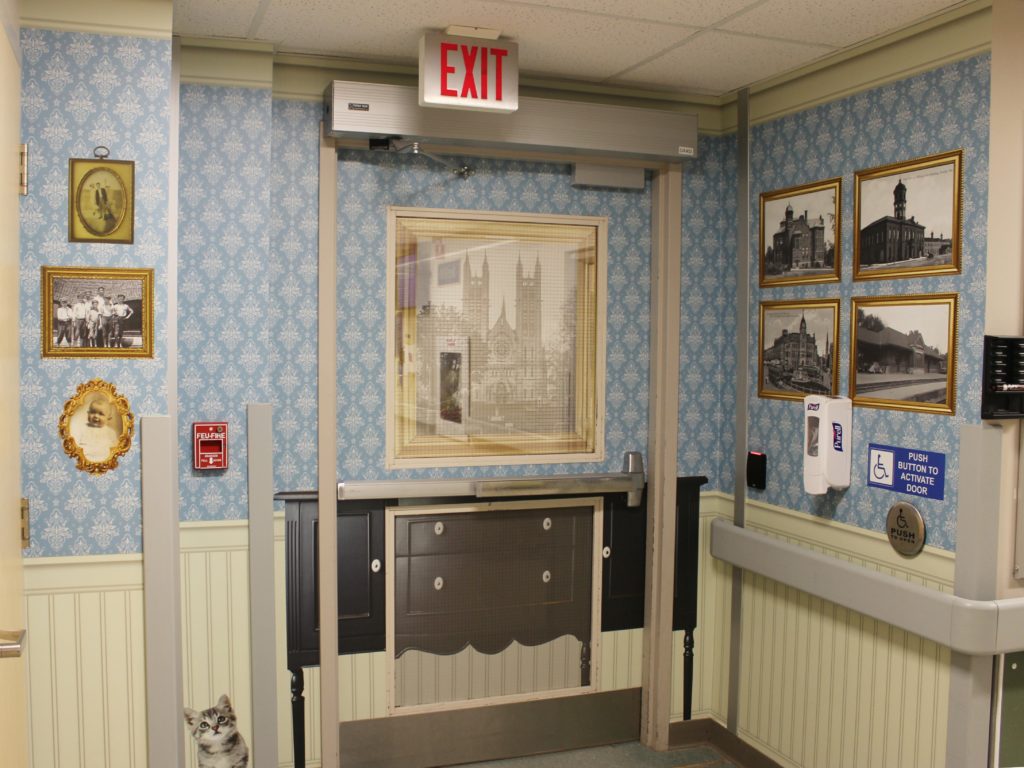Door Disguises – A Best Practice in Elder Care – Come to Our 4West Medical Unit
Sometimes, keeping our patients calm is necessary as part of their healing journey. Feelings of anxiousness can take a toll on mental and physical energy and can reduce the ability to improve health. In some of our senior patients, these feelings can lead to what are known as ‘exit-seeking’ behaviours.
Have you ever visited a hospital or long-term care home and noticed seniors trying to open doors? You likely then also noticed staff distracting those patients with offers of a cup of tea or an activity. In some cases, patients can get agitated at being diverted from trying to leave and may attempt to push past staff or hit out to get through the door.
Concealing the exits can remove one of the many anxiety triggers in a hospital setting for patients experiencing delirium, dementia or other neurocognitive impairments. Research from other health care facilities has shown that physical behaviours, exit-seeking and staff harm have been reduced after the installation of door disguises and murals. Patients no longer recognize the exit and walk right by or even stop to admire the images.
We are so happy that recently, two incredibly realistic door disguises were installed on 4West. One covers the elevators and the other covers the main door.
These pictures show the elevators covered with a familiar view of Guelph’s Riverside Park. When the doors are closed, they are disguised by blending in with the scene.

4 West Unit Entrance/Exit 
4 West Elevator Door Open 
Elder Life Specialist, Rebekah Larter
The cat in the main door disguise allows staff to ask wandering patients to “not let out the cat.” Photographed here is Elder Life Specialist, Rebekah Larter, who helped make this project possible.
Rebekah is thrilled with the positive impact and relates, “Since November many patients, family and staff have been able to enjoy the familiar scenes in the murals and the opportunity they provide for conversation, reminiscing and rapport building. One visitor was even able to connect with their family member by pointing out an old car similar to what the patient used to own. It is heartwarming to observe these opportunities for connections. Any time we can create a more supportive environment, we are going to see a decrease in anxiety and responsive behaviours.”
The door disguise murals were funded thanks to our generous donors.

